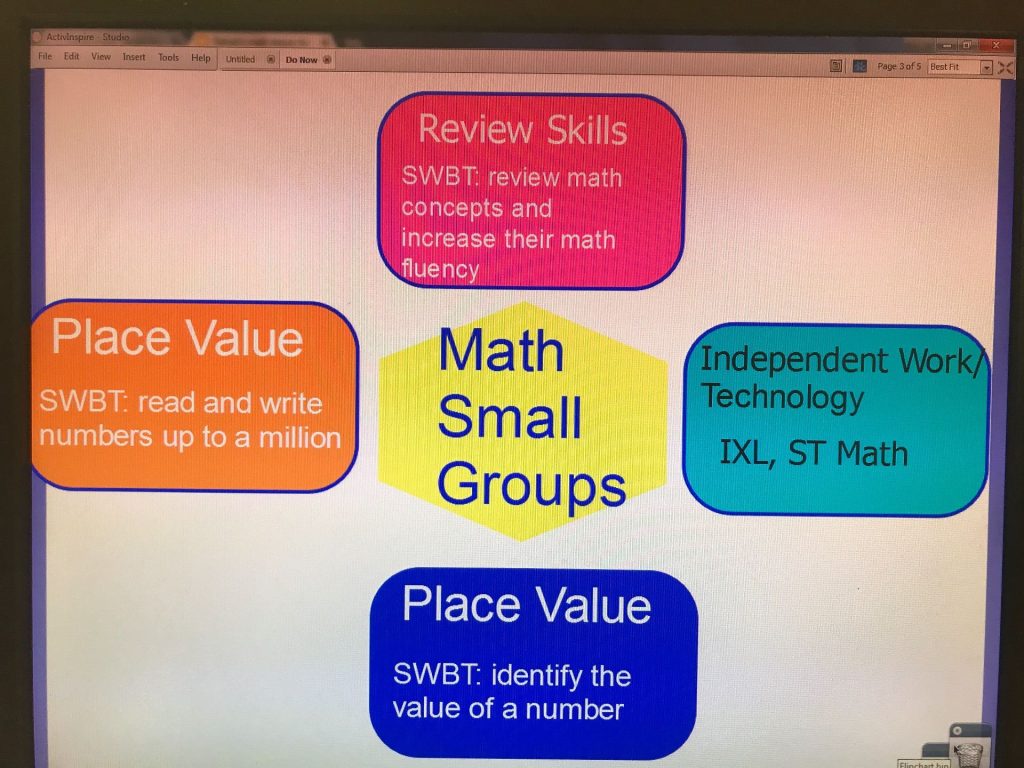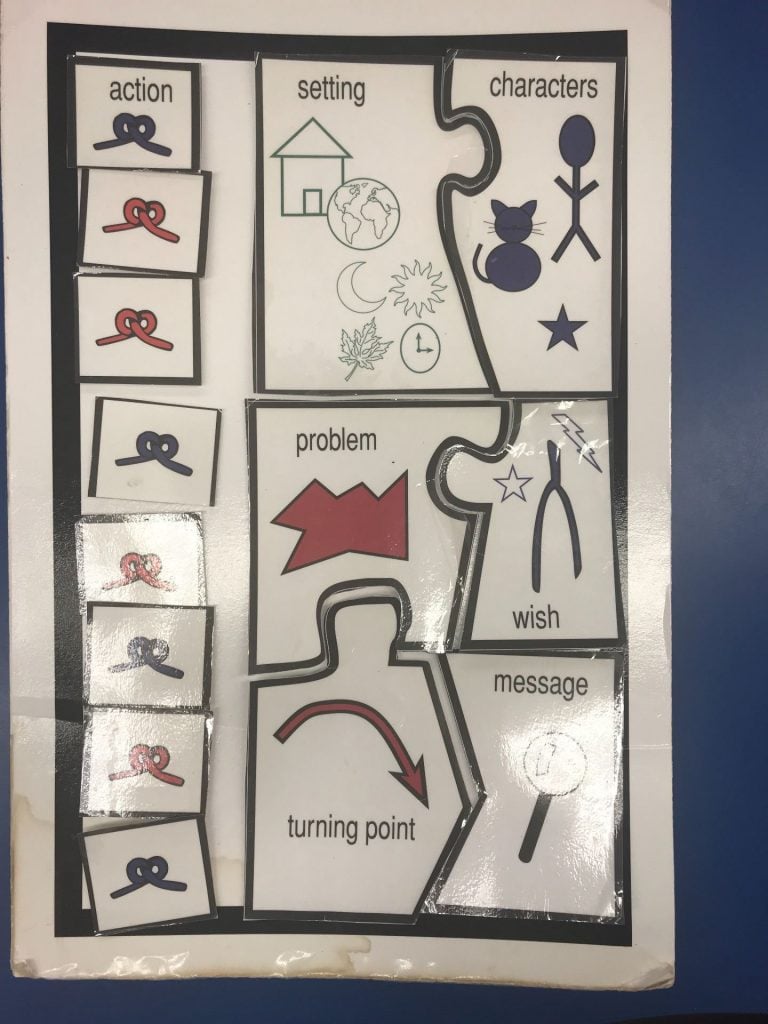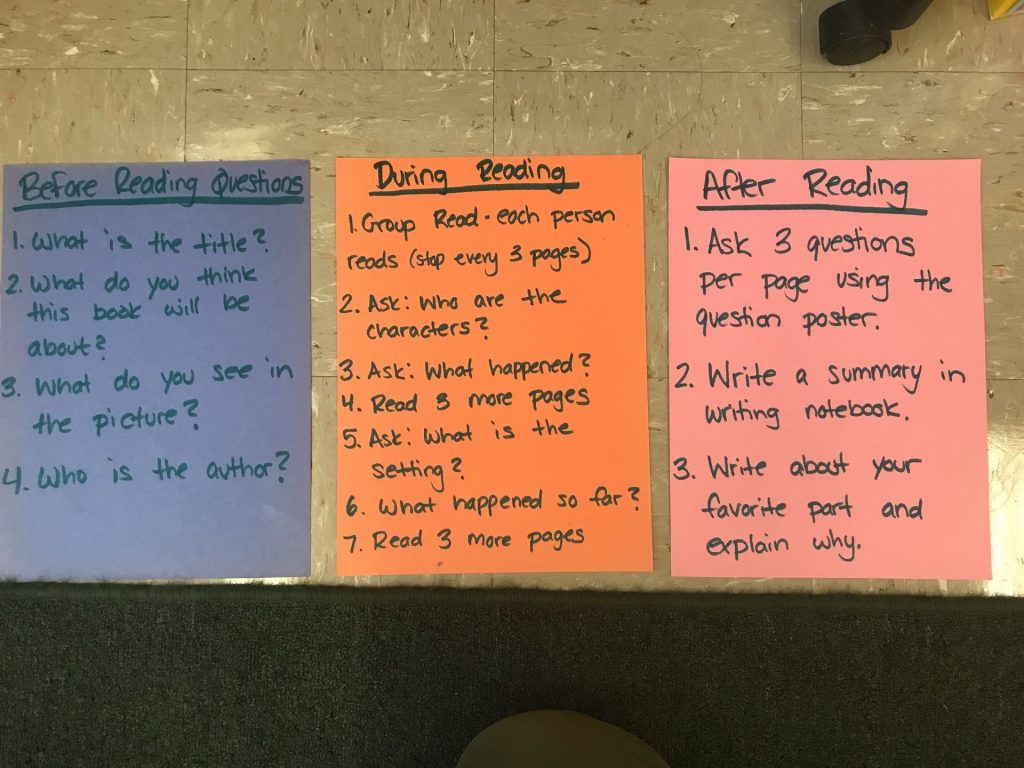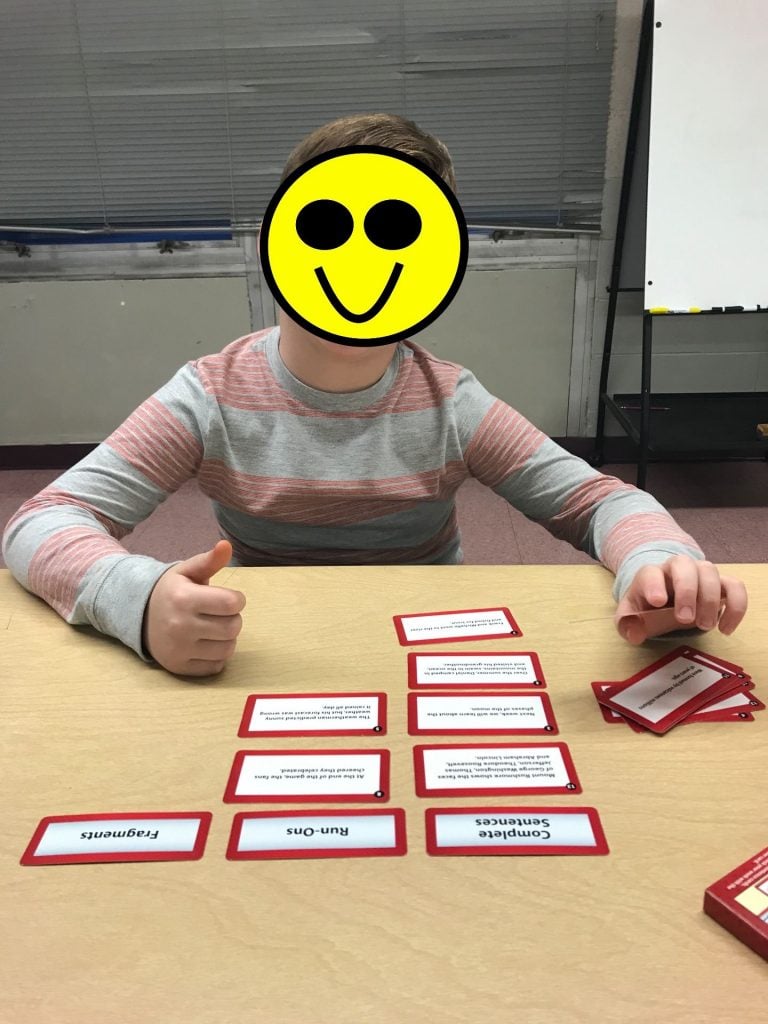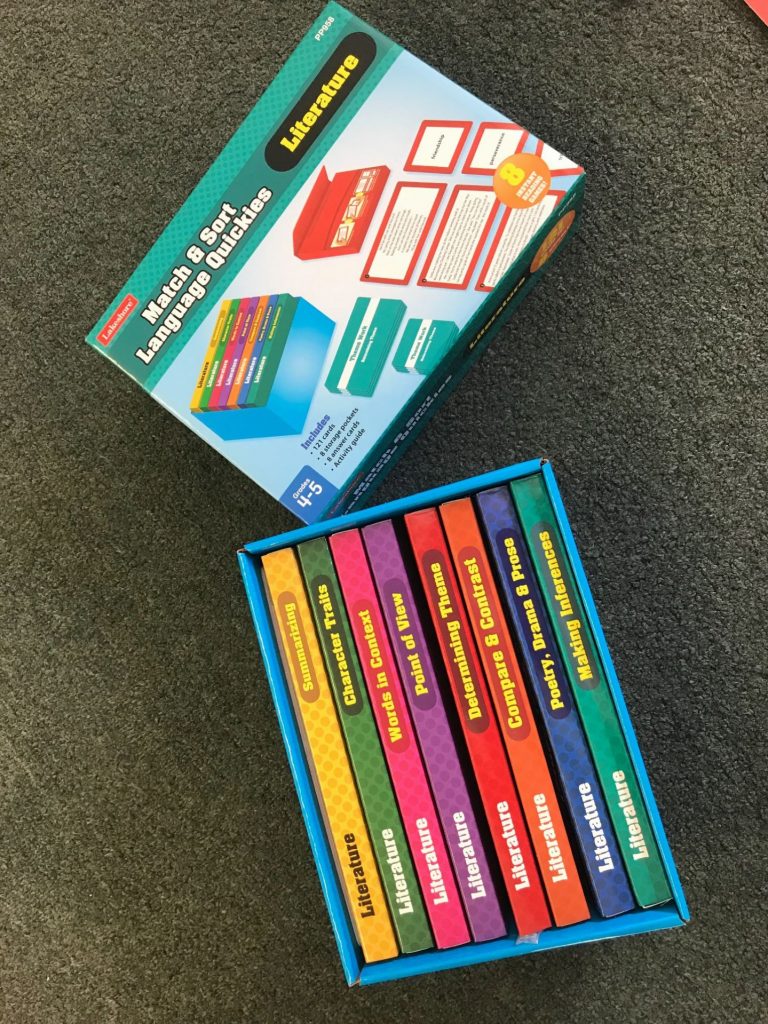Self-assessments help students think about their own learning. It encourages responsibility, active participation, and critical reflection. In addition, it can strengthen a student’s judgment skill and provide the opportunity for a change in performance. When an adult enters the workforce, it is assumed that one understands what is expected of them. As a lifelong learner, a student must start by being able to identify the objective of the lesson and then judge if he/she met the expected goal. Since teachers are constantly striving for their students to be active learners, self-assessment is a critical component in the classroom, which is why the Danielson model (the current model used in various states to assess teacher effectiveness) includes student self-assessment in a lesson. A lot of teachers, however, struggle to find ways to get students to self-assess after or during a subject period, especially when a student has a language weakness. In my classroom, I have found that assessment cards guide my students through the self-assessment process successfully. When first teaching the self-assessment routine, I write the objective at the top of the card with the benchmarks that help guide the conversation. For example, when reading a story, my students need to ask and answer questions about the story. To do this, they must use question words and use details from the text to support their answer. An example of a card I would use at my reading center is below.  Before starting my lesson, I present the yellow card with the objective as I state our goal (ie. reading a story and asking and answering questions). This card is multi-purposeful since it clearly states the objective, states what is needed to meet the objective, and serves as a visual model of what I expect from my students. I leave this cards at the place where my students are engaging in the specific activity. An example of a math card is below:
Before starting my lesson, I present the yellow card with the objective as I state our goal (ie. reading a story and asking and answering questions). This card is multi-purposeful since it clearly states the objective, states what is needed to meet the objective, and serves as a visual model of what I expect from my students. I leave this cards at the place where my students are engaging in the specific activity. An example of a math card is below:  Then, we do our lesson and activity. At the end of our lesson, the students at the teacher table do a special clap. The rest of the class stops what they are doing and claps back. Then, the students at the teacher table say “Please assess your own learning. Give yourself a 1, 2, 3, or 4.” All students read their individual yellow objective card. For each benchmark objective, they state if they did what was written or not. To promote higher-level thinking and independence, I leave a benchmark with a blank line for students to fill in their own benchmark objective. Since my goal is to have my students do this independently, the written card serve as a model when I am teaching the process.
Then, we do our lesson and activity. At the end of our lesson, the students at the teacher table do a special clap. The rest of the class stops what they are doing and claps back. Then, the students at the teacher table say “Please assess your own learning. Give yourself a 1, 2, 3, or 4.” All students read their individual yellow objective card. For each benchmark objective, they state if they did what was written or not. To promote higher-level thinking and independence, I leave a benchmark with a blank line for students to fill in their own benchmark objective. Since my goal is to have my students do this independently, the written card serve as a model when I am teaching the process. 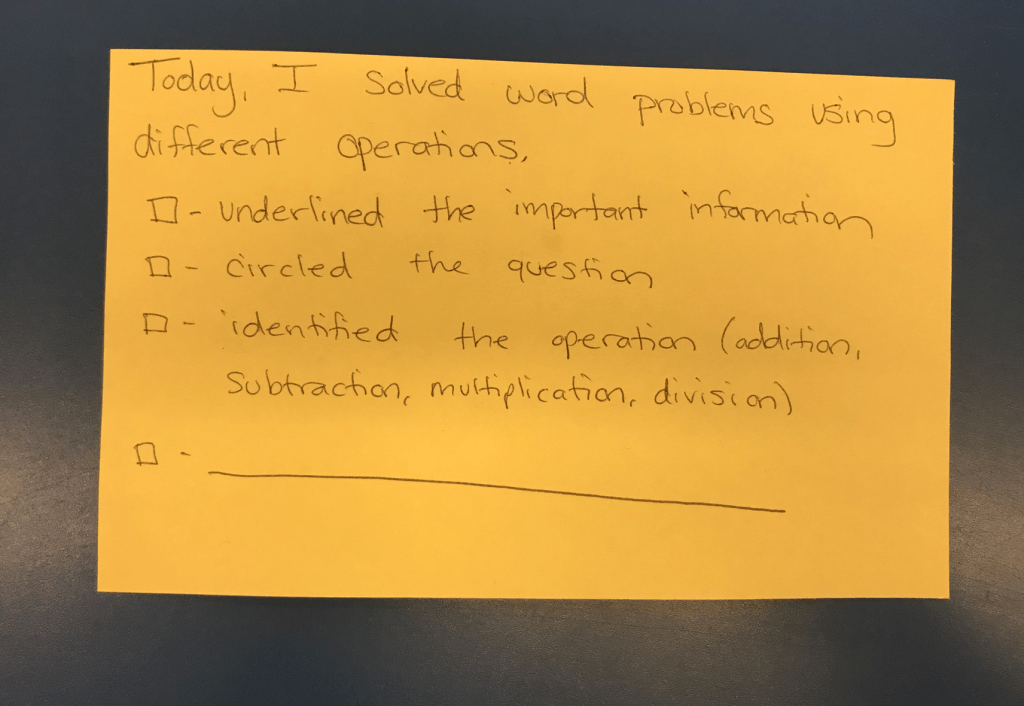 Students take turns sharing in their groups. After students read through the yellow objective card, they ask their group members “What did you do well?”. Students identify their area of strength throughout the lesson. Then students ask their group members “What do you need to work on?” Students state specific goals that they need to work on. If student responses are general, teachers provide specific feedback and tell the students to be more specific. Then, students at the teacher table clap again and say “please move to the next station”. All students at this point stop talking and move to the next station. This rotation and self-assessment piece can take place up to three to four times during one subject period, depending on the length of each center and the length of your subject period. Some examples of the cards I use are below:
Students take turns sharing in their groups. After students read through the yellow objective card, they ask their group members “What did you do well?”. Students identify their area of strength throughout the lesson. Then students ask their group members “What do you need to work on?” Students state specific goals that they need to work on. If student responses are general, teachers provide specific feedback and tell the students to be more specific. Then, students at the teacher table clap again and say “please move to the next station”. All students at this point stop talking and move to the next station. This rotation and self-assessment piece can take place up to three to four times during one subject period, depending on the length of each center and the length of your subject period. Some examples of the cards I use are below: 

 Throughout the year, I slowly fade the level of support given on the cards although for students with disabilities, the cards can be used as visual support/language script. In the article, “Leading and Learning: Metacognition as a Tool for Improving Student Success,” Youki Terada believes that self-assessment “can close a gap that some students experience between how prepared they feel for a test and how prepared they actually are.” While testing is not my ultimate goal, I believe it shapes a learner’s brain by accurately assessing and identifying his/her strengths and weaknesses. Then, this helps the learners make goals while learning.
Throughout the year, I slowly fade the level of support given on the cards although for students with disabilities, the cards can be used as visual support/language script. In the article, “Leading and Learning: Metacognition as a Tool for Improving Student Success,” Youki Terada believes that self-assessment “can close a gap that some students experience between how prepared they feel for a test and how prepared they actually are.” While testing is not my ultimate goal, I believe it shapes a learner’s brain by accurately assessing and identifying his/her strengths and weaknesses. Then, this helps the learners make goals while learning.
The Oscars and People With Disabilities in the Media
With all the hype of the upcoming Oscars, many fans have been discussing the role of people with disabilities in the media. Some recent shows and movies, such as The Good Doctor and Wonder, have made an effort to make a person with a disability as the main character. Other shows have been written by people on the autism spectrum and/or have been consultants to movie directors. Given how broad the disability spectrum is, it is important to remember that “no one size fits all” and no one TV show will show all the unique characteristics within someone diagnosed with a specific disability. As I started to research people with disabilities in the media, I found a bunch of articles that name specific people, shows, and movies. I have included them below for your reference.
Movies:
- Wonder
- Temple Grandin
- The Mighty
- A more detailed list by category here: https://iris.peabody.vanderbilt.edu/films/
TV Shows:
- The Good Doctor
- Born This Way
- Atypical
Actors/Filmmakers:
Some fun side articles:
Penpal Writing: Free Brainstorming Sheet
Writing letters can be considered a lost art, but it is important to teach students how to write a proper letter. A letter (even if it is in the form of an email) is needed when applying to jobs, writing to government advocating for change, and used to write to family and friends.
This year, our class is writing to a class in Virginia (a teacher and I connected on a CEC forum and she asked if we would be penpals) and we are writing to a girl I support in Mozambique, Africa. I decided to have my students write to students in the United States and outside the United States to broaden my students’ perspective. For the letter to the class in Virginia, my students were given more models and support. For the letter to the girl in Mozambique, less support and guidance was given. Typically, when I teach a particular type of writing, I have my students write two copies. The first prompt with a lot of teacher guidance, models, and visual supports and the second prompt with the same models and visuals support, but without the direct teacher guidance.
In Mozambique, schools look a lot different than here in the US. Students do not have the same access to books, writing supplies, school buildings, and at times, even teachers. Children in Mozambique sometimes need to drop out of school to help their families make money. My students are writing to a girl named Emily who is around their age. They are interested to know how Emily’s life is different from their life and how her life is similar to theirs. We cannot wait to get a letter back from Emily! Our letters to her are shown above. I included a free writing brainstorming sheet for writing to a penpal. This brainstorming sheets provide students step by step directions.
Free Division Resources
When teaching division, it is essential that students have a strong background in multiplication. If students are not fluent with their multiplication facts, a multiplication chart can be given as a modification.
Below, you will find some of my favorite FREE resources I have found/made when introducing division to my students.
Anchor Charts for Basic Division:
TeacherPayTeacher FREE resources:
- https://www.teacherspayteachers.com/Product/Division-Strategy-Mini-Posters-546788
- https://www.teacherspayteachers.com/Product/Division-Strategies-Anchor-Chart-Freebie-1274169
- https://www.teacherspayteachers.com/Product/Multiplication-and-Division-Strategies-FREEBIE-2105850
Video Reference: **brainpop requires a subscription
- Making Equal Groups: https://jr.brainpop.com/math/multiplicationanddivision/makingequalgroups/
- Dividing with Remainders: https://jr.brainpop.com/math/multiplicationanddivision/dividingwithremainders/
- Repeated Subtraction: https://jr.brainpop.com/math/multiplicationanddivision/repeatedsubtraction/
- Division: https://www.brainpop.com/math/numbersandoperations/division/
Long Division
Acroynms to help students remember the steps:
DMSBR: Divide, Multiply, Subtract, Bring Down, Repeat
Does McDonald Sell Burgers Raw?
The Division Family: Dad, Mom, Sister, Brother, Rover
***I have my students write DMSBR on a post-it note or on top of each problem and they need to check off each step. This helps keep them organized and structured when working.
Visuals to help students remember the steps:
Free Resources:
- https://www.teacherspayteachers.com/Product/Two-Long-Division-Strategies-1274072
- https://www.teacherspayteachers.com/FreeDownload/Long-Division-Practice-Sheets-1469531
Video References:
How to Run Effective Centers
Small groups are essential for students to receive personalized instruction. In my classroom, I run small groups for reading, math, and flex time. At times, I also have Social Studies/Science, small groups.
For small groups to be effective, a schedule needs to be in place to make it clear to both students and teachers where each student should be and what students should be doing at each center. A sample of my schedules are below:

I like to set up centers where students receive teacher instruction, have the opportunity to practice specific skills independently, a place where they can review skills, and a time where they can go on online programs that reinforce learning.
In my picture, you will notice that my small group visual on the board does not have arrows. Last year, I was able to have my students attend each center in a simple circular rotation, but this year, because the needs of my students have changed, not all students attend each center. To compensate for that, my students start at the same station every day so they know where to go after each rotation. One group starts at the teacher table, then goes to the independent poster station, and then go to vocabulary, and then technology. My students caught on pretty quickly and can transition independently to each place since the routine is the same each day.
Below, I will describe each reading center in detail. In a later post, I will share more information about my math centers and social studies/science centers.
Teacher Table: At the teacher table, I provide intensive instruction (phonics work, comprehension skills, and specific reading strategies). At this table, we follow our reading program curriculum. We use the program Project Read, which allows for phonics and comprehension instruction.
EdMark/Vocab Station:
EdMark is a sight word program for students who have not been successful with phonics-based programs. It is highly repetitive and provides end of unit assessments. EdMark includes an assessment book (great for data collection), a workbook, a picture match, stories, homework, and spelling. I love this reading program since I have seen it really help some of my students who have been nonreaders. EdMark has two levels (Level 1 and 2). Students need one-to-one instruction while using this program since it is highly individualized.
During my student teaching, I used the phonics program Fundations and Lively Letters. I also incorporate some cool spelling tricks.
Independent Poster/Manipulative Center:
At this station, I have students practice the skills I just taught independently or to review skills already taught earlier in the year. At times, I need to help my students if they are struggling, but I like to give them time to try a skill on their own (after guided instruction at the teacher table). I use different colored post-it notes for each group that matches the color of their individualized reading boxes. This helps me know what each group has accomplished at this station. I have several anchor charts that focus on each skill (such as summarizing, comparing and contrasting, making inferences, cause and effect…etc). In this picture, I featured my story element poster since it is one that I always start the year with.
In this center, I provide leveled books and different follow up activities (such as writing a summary, asking and answering questions, and writing about their favorite part). In addition, I am very intentional about structuring and modeling how to “stop and think” while reading. Most students typically read without stopping and asking questions. By giving clear guidelines such as stopping after every paragraph or every 2-3 pages in a book, I find that my students are starting to build healthy reading habits that can be transferred during their independent reading time later in the day. As seen in the pictures below, I leave instructions and self-assessments so students can run this station on their own.
At times, I also utilizes manipulatives (such as matching games and centers in a bag) from LakeShore or ReallyGoodStuff.
Spelling/Vocabulary Center:
At this station, students practice their spelling and vocabulary words. I have students write words in their notebooks, build words with magnets or blocks, write the word in a sentence, or write a story/song.
In a previous post, I outlined various ways to practice spelling words. I use these ideas for homework and in class.
Technology Center:
In my school, we utilize the following reading programs: Achieve3000 Raz Kids, and Reading Eggs. Here, I took pictures of the program Achieve3000. I appreciate that each of these reading programs have accommodations such as a read-aloud option, vocabulary help, and extended time to complete each activity. In addition, I recommend the following online reading websites.
Student Run Centers:
A clear structure is very important when setting up centers. I typically do not change the routine so my students can independently do each center. At the end of each center, my students clap to get the other groups attention and self-assess their own learning. I provide objective cards at each station and then students ask each other what they did well and what they need to continue to work on. We clap again and the students at the teacher table say “please move to the next station”.
In a post coming to this blog soon, I will share more pictures of my objectives cards that my students use to self-assess after each center rotation. Eventually, I would love for my students to think of the objective and benchmarks on their own, but for now, this is a guided structure that I utilize to ensure content vocabulary, reflection, and accurate assessment of their time at each center.
Comment below to share your center/small group advice. What challenges do you experience when implementing centers? What systems/structures could you share with others? Ideas and reflection help us all grow so your thoughts are greatly appreciated!
Reading Websites for Parents and Teachers
A lot of parents ask me ways their child can practice reading at home. Below is a list of reading resources shared by my reading specialist that supports student learning in school and at home. I have used a lot of these resources. My personal favorite for teachers is Readworks.
- New York Times Kids Blog: http://www.nytimes.com/section/learning
- Tween Tribune: http://tweentribune.com/
- Epic Books: https://www.getepic.com/
- Kids Discover: http://www.kidsdiscover.com/quick-reads/
- Common Lit: http://www.commonlit.org/
- ReadWorks: http://www.readworks.org/
- Starfall: http://www.starfall.com/
- Breaking News English: http://www.breakingnewsenglish.com
- For the Teachers: http://www.fortheteachers.org/reading_skills/
- ThinkCERCA: http://www.thinkcerca.com/
- NewsELA: https://newsela.com/
- News in Levels: http://www.newsinlevels.com/
- Unite for Literacy: http://www.uniteforliteracy.com/
- Bookbox: https://www.youtube.com/user/bookboxinc
- Center for the Study of Adult Literacy: http://csal.gsu.edu/content/are-you-learner
Choose Kindness- The Movie “Wonder”
Is it better to be kind, or right? #choosekind
Today, the fourth and fifth grade students had the opportunity to see the movie “Wonder”. It is a highly recommended film for teaching kindness and for starting a discussion about how to include others who are different than you. Based on the book, “Wonder”, Auggie, the main character, has extreme congenital facial anomalies and starts public school for the first time. He has had 27 surgeries and often wears an astronaut helmet to hide his face.
Auggie says:
“I know I’m not an ordinary ten-year-old kid….I know ordinary kids don’t make other ordinary kids run away screaming in playgrounds. I know ordinary kids don’t get stared at wherever they go… It’s like people you see sometimes, and you can’t imagine what it would be like to be that person, whether it’s somebody in a wheelchair or somebody who can’t talk. Only, I know that I’m that person to other people… To me, though, I’m just me. An ordinary kid.”
The movie does a great job diving into the emotions of the boy Auggie, his friends, his family, and the people he comes in contact with at school.
Take Aways:
- Don’t judge a book by its cover
- Be kind to people who are different
- One kind action can have a ripple effect
Strengths of the Movie:
- Emotions of the main character are shown clearly and makes him highly relatable
- Reinforces the idea that every child, no matter how they look or what they do, want to build genuine friendships with others
- One brave act can inspire other children to do the right thing
Possible Considerations Before Watching the Movie:
- It is rated PG
- Some kissing moments between the mom and dad, and the sister and her boyfriend (our students tended to react with EWWW and laughing at these parts)
- Some scenes of adults drinking wine and there is a mention of getting drunk once in the movie
- Also, there are fighting scenes between the boys/students (which is praised by the dad)
Classroom Follow-Up Activities:
- Wonderful Website: http://wonderwebbook.weebly.com/wonder-ful-activities.html
- Teacher Pay Teacher: https://www.teacherspayteachers.com/Browse/Search:wonder
- Choose Kind Challenge: https://lionsgate.promo.eprize.com/wonder/
Additional Videos for References:
Fall Bulletin Board Ideas
Free Subtraction Worksheet
When teaching skills such as addition and subtraction, many websites provide free resources to help students practice their math skills. Education.com is a website I use when looking for homework and classwork.
One of the best features about education.com is that you can build your own custom worksheet. This is a great feature for teachers who want to modify the number of problems or type of problems they are giving their students.
If you do not want a custom built sheet, Education.com provides many choices for teachers to choose from. Challenge your mathematicians with this FREE fun school-themed subtraction worksheet below.
Free Subtraction Worksheet from Education.com
Answers To Free Subtraction Worksheet from Education.com
Here is a subtraction poem I use in my classroom to help students remember the steps to subtraction.
Enjoy more math worksheets from Education.com.
Happy World Teachers’ Day
Today is World Teachers’ Day! In 1994, the United Nations Educational, Scientific, and Cultural Organization (UNESCO) marked October 5th to be the day to recognize teachers around the world. Each year, UNESCO holds an annual conference in Paris where awards are given out.

In celebration of World Teachers’ Day, I put together a list of different articles referencing/celebrating/or sharing information about this special day.
- http://www.cnn.com/2017/10/04/health/teacher-pay-and-status/index.html
- http://www.huffingtonpost.com/entry/world-teachers-day-arts-educators_us_5612a406e4b076812702a656
- http://www.ibtimes.com/world-teachers-day-2017-11-inspiring-quotes-celebrate-educators-2597655
- https://www.ndtv.com/education/world-teachers-day-7-teachers-who-became-renowned-authors-1758937
- Inside A Changing First-Grade Classroom in the 1970s
- http://www.unesco.org/new/en/unesco/themes/icts/teacher-education/
- https://antiguaobserver.com/editorial-today-is-world-teachers-day/
- http://www.news.com.au/lifestyle/parenting/school-life/an-open-letter-to-teachers-everywhere/news-story/746487e12e59a7e492f5e3741911192e





